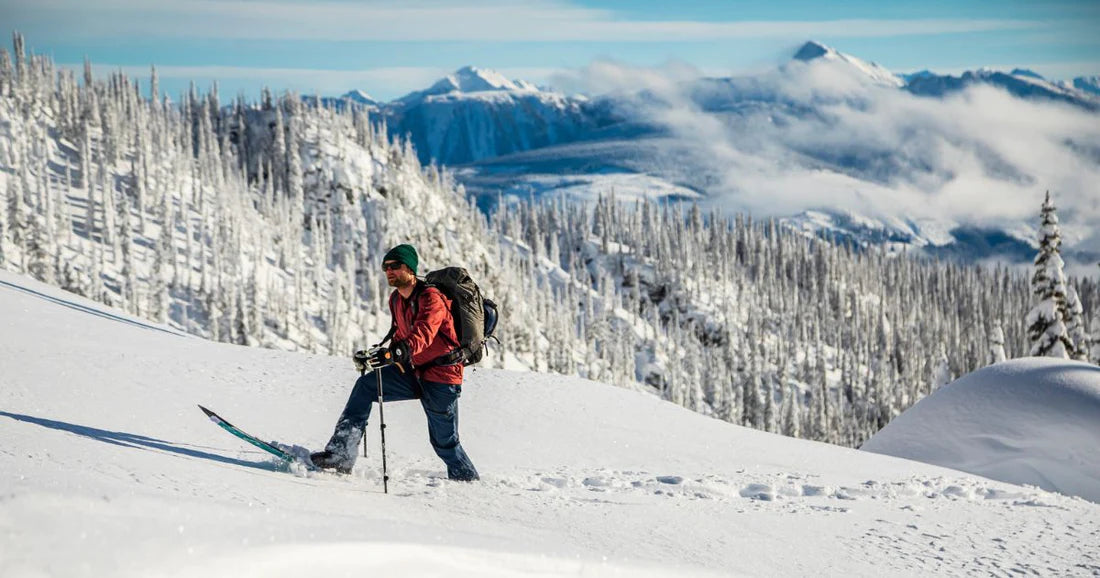Backcountry skiing is a thrilling mix of exploration, physical challenge, and communion with nature. It requires the right gear, especially skis that balance uphill efficiency with downhill performance. This in-depth guide combines expert advice with practical tips to help you select the ideal backcountry skis.
1. Understanding Backcountry Skis
Backcountry, or alpine touring (AT) skis, are distinct from traditional alpine skis. They are designed to be lighter for climbing and wider to handle diverse snow conditions. Your choice should be guided by how you balance uphill and downhill skiing, the type of terrain you'll encounter, and your personal skiing style.
2. Types of Backcountry Skis

Touring Skis: Ideal for those who spend as much time ascending as descending. These are lighter and more agile for efficient climbing.
All-Mountain Skis: Versatile skis suited for a mix of backcountry and resort skiing, offering a balance between weight and downhill performance.
Powder Skis: Best for deep snow conditions, these skis have a wider waist for better flotation.
Racing or Ski Mountaineering Skis: Designed for speed and long-distance, these are the lightest and narrowest, focusing on efficiency over versatility.
3. Size and Shape Nuances
Length: The choice of length is a complex balance involving your height, skiing style, terrain, weight, and skill level. More aggressive skiers may prefer longer skis for better stability, while more casual skiers might choose shorter skis for maneuverability.
Width: Skis under 95 mm are better for hardpack snow and longer tours, while skis in the 95-105 mm range offer versatility for various conditions. Skis over 105 mm provide excellent flotation in deep powder but can be heavier and less maneuverable.
Profile: The profile (camber and rocker) significantly impacts ski behavior. A cambered ski offers more edge control and stability on hard snow, while a rocker aids in deep powder by lifting the ski tips.
4. Weight and Material Considerations
Lighter skis make climbing easier but might compromise downhill control. The construction materials, such as the wood core and carbon fiber reinforcements, play a crucial role in balancing weight, durability, and performance.
5. Ensuring System Compatibility
Your skis, bindings, and boots should form a cohesive system. Check compatibility and consider how each component contributes to your overall skiing experience.
6. Matching Skis to Your Skiing Style and Ability
Understand your skiing style—whether you're aggressive or relaxed, your weight, and your skill level. These factors will influence your choice of ski length, width, and profile.
7. Expert Advice and Hands-On Testing
Seek advice from seasoned backcountry skiers or professionals at ski shops. Hands-on testing is invaluable—try different skis to understand how they feel and perform in real conditions.
8. Regional Considerations
Consider regional differences in snow conditions. For example, the Pacific Northwest typically has wetter, denser snow, favoring different ski characteristics than the drier snow found in the Rockies.
9. Understanding Ski Rocker and Camber
-
Camber: A traditional cambered ski has a continuous arch, providing more stability and edge grip, especially on hard snow.

-
Rocker: Rocker, or negative camber, features a raised tip and sometimes tail, improving maneuverability and flotation in powder.

10. Tailoring Your Choice
Remember, no single ski can handle every condition perfectly. Tailor your choice based on where you'll ski most often and what type of skiing brings you the most joy.
Selecting the right backcountry skis is a journey in itself, requiring a thoughtful consideration of your skiing style, preferred terrain, and personal preferences. With a careful and informed approach, you can find skis that not only enhance your performance but also elevate your overall backcountry experience. Remember, the ideal skis are those that resonate with your unique style and meet the demands of the majestic yet unforgiving backcountry terrain.











